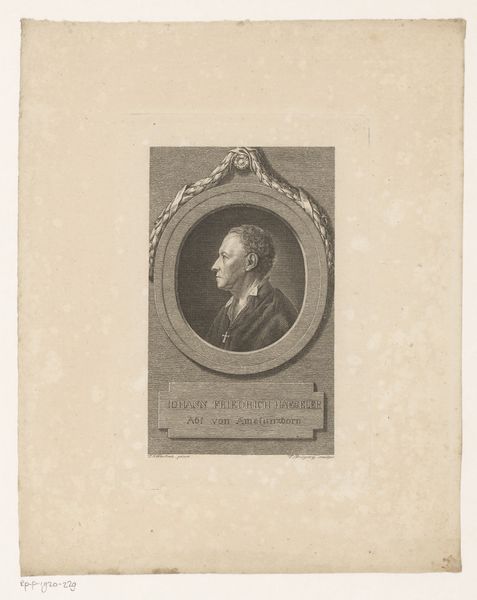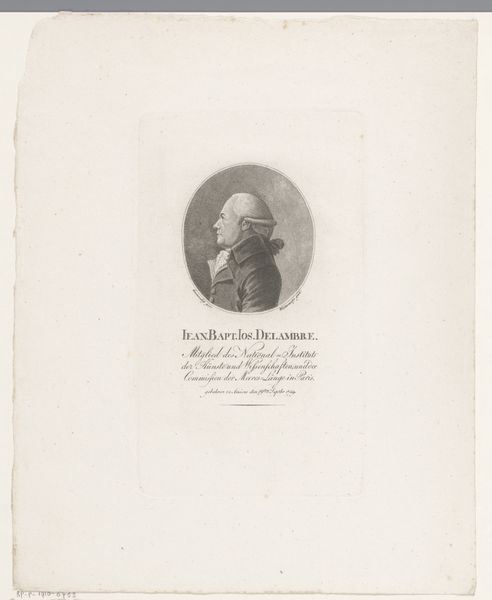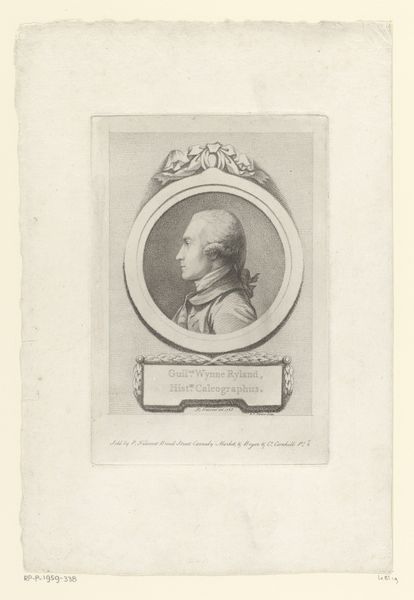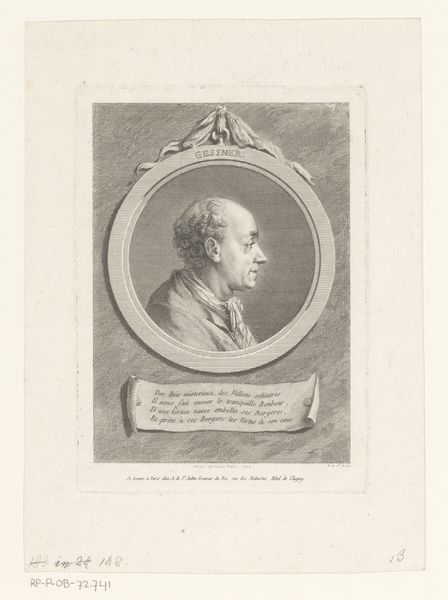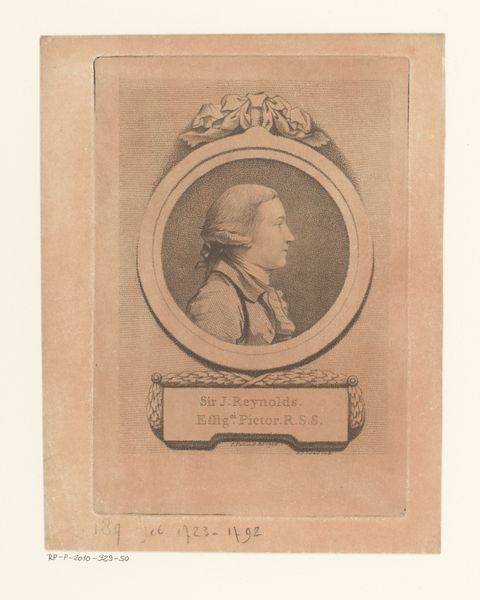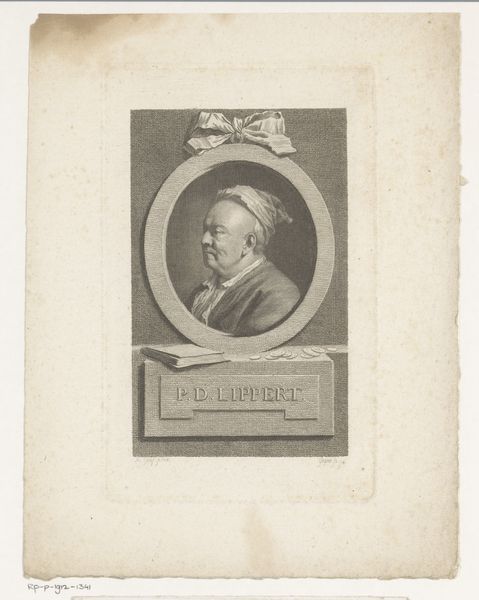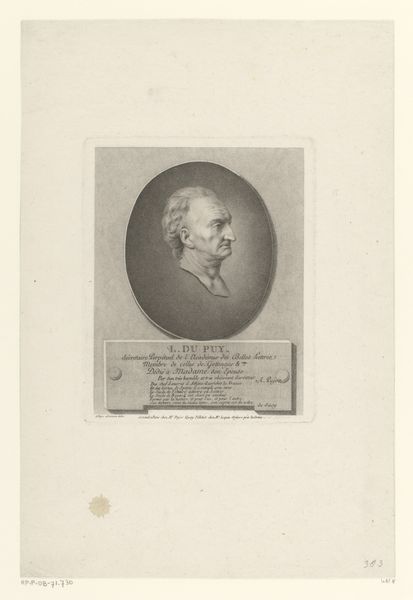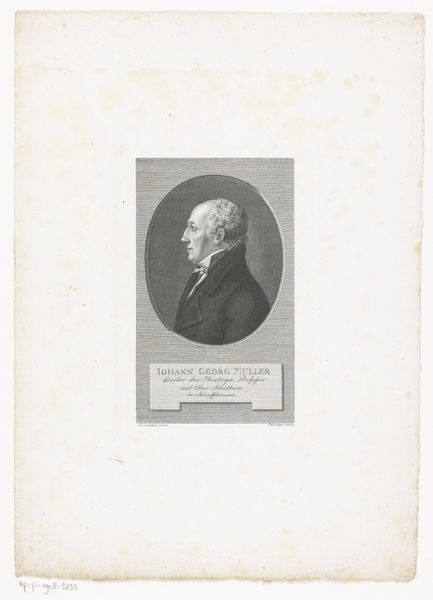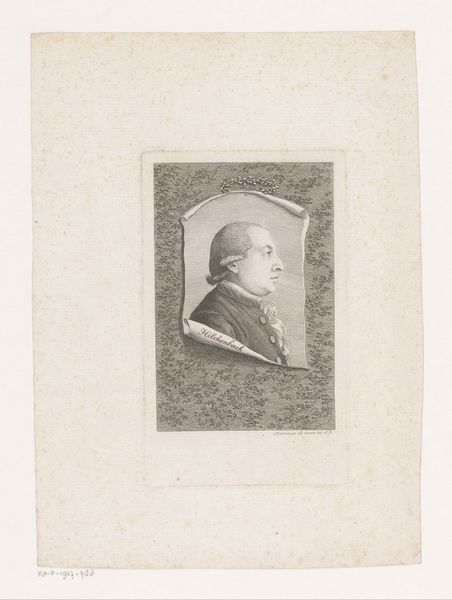
paper, engraving
#
portrait
#
neoclacissism
#
paper
#
15_18th-century
#
engraving
Dimensions: height 169 mm, width 102 mm
Copyright: Rijks Museum: Open Domain
Curator: This image captures the Enlightenment’s faith in reason and order. What strikes you first about it? Editor: A profile so severe! I mean, it gives off an aura of cool authority and controlled power; he's almost entirely stone-faced. Curator: Gottlob August Liebe created this portrait of Abraham Gotthelf Kaestner sometime between 1771 and 1819, so it is from the late 18th century, maybe even early 19th. Editor: This image comes from paper, right? Its materiality seems to emphasize its role in documentation, as historical evidence. What more do you know about Kaestner and why Liebe may have made this image? Curator: Well, it is actually an engraving. Kaestner was a prominent mathematician and professor. Given his significance, commissioning or distributing his portrait through print would certainly amplify his intellectual influence across society. Think of it as social capital. Editor: Indeed! This neat oval shape within the stark rectangle confines him, but it also elevates him—sets him apart with the ornamental ribbon above. It's like, 'here stands reason.' The lines are so meticulous, very Neoclassical. But even a simple, elegant design can't fully conceal the sitter's rather… pronounced nose. Was this flattery or reality? Curator: Well, Neoclassicism embraced idealized forms, yes, yet portraiture demands a likeness, doesn't it? This nose reads almost as a symbolic stand-in for character, or maybe just, well, his face. I agree the lines are sharp and precise which are a testament to the engraver's skill, and contribute to the portrait's overall formality and gravitas. We must consider this portrait within its historical context. In its creation and reception, this imagery certainly shaped perceptions of Kaestner as a learned figure. Editor: Agreed. The medium is integral; engraving here wasn't just a practical choice. It served an ideological function to present authority via controlled artistic practices and proliferation of an aesthetic vision across various societal echelons. And now we engage with it in a very different time, for yet another purpose. It's intriguing how it continues to reverberate in this space. Curator: Absolutely. It certainly invites consideration of how cultural memory gets crafted through very formal portraiture practices.
Comments
No comments
Be the first to comment and join the conversation on the ultimate creative platform.
